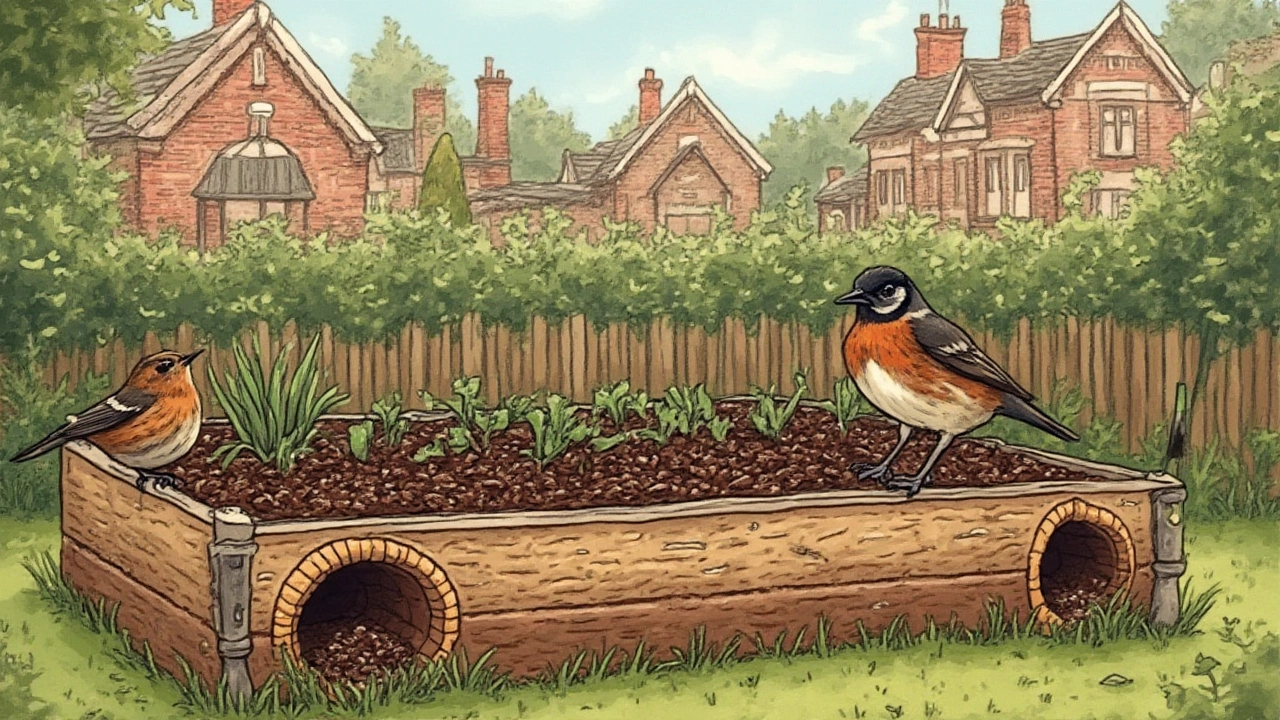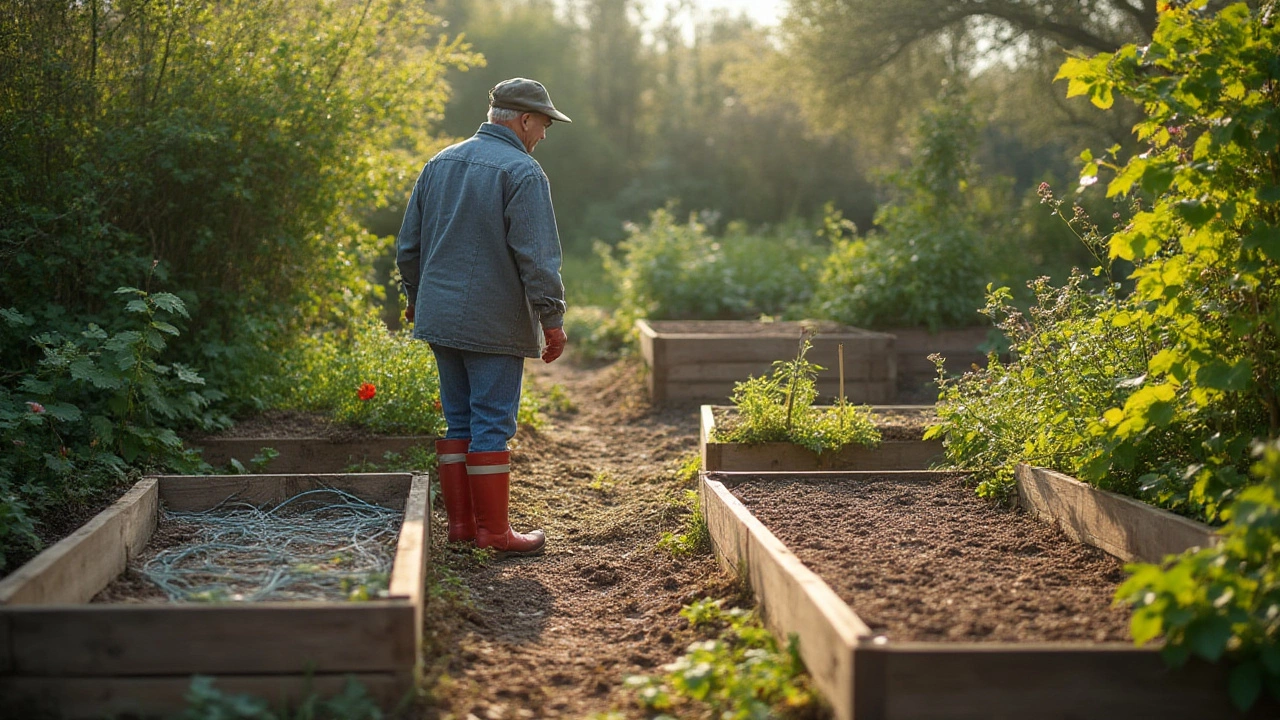Standing in my backyard, shovel in hand, I once watched Marlon and Esme roll around in the old gardening tarp. I was knee-deep in a decision that seems small but trips up just about everyone building their first raised bed: Should I put a bottom on my raised bed or just fill it with good soil? It’s a question that doesn’t get asked enough—but if you skip it, you risk root rot, weeds, or even seeing half your soil disappear after the first storm.
The Real Reasons People Add Bottoms to Raised Beds
Let’s get down to why the bottom of a raised bed is even a thing people fuss over. There are a few real enemies here: weeds, burrowing pests (think moles and voles), uneven ground, and soil washout. You might have heard that a bottom prevents soil from leaking out or helps with drainage. But, here’s a bit of straight talk—those claims get a lot more complicated depending on your setup. My first raised bed was a mess of cardboard, old chicken wire, and dug-up garden fabric. Why? Because I was paranoid about weeds and losing all the expensive organic mix I’d just dumped in there. Turns out, some solutions are overkill, and others just shift the problem somewhere else.
Some gardeners swear by lining the bottom with hardware cloth (a metal mesh) to keep gophers and moles out—that’s common wisdom in squirrel-rich neighborhoods. Others prefer cardboard or thick newspaper to smother weeds. In community gardens (there’s one down my street), the standard is usually a double-layer of landscape fabric for weed and grass control. But the funny thing is, if you ask around, you’ll hear just as many stories of people who skip the bottom entirely and never regret it. The decision often comes down to soil type and what you’re trying to grow. Try putting a bottom on a tall bed full of tomatoes and you might wind up with soggy, sad roots. But try skipping a bottom in a garden riddled with bindweed? You’ll spend your summer yanking out shoots like you’re playing some weedy game of whack-a-mole.
The pest angle really does matter. Where I live in the Midwest, gophers don’t mess about. Hardware cloth (not chicken wire; gophers chew through that like it’s cotton candy) seems to be the only thing tough enough to stop them. Marlon once dubbed them “underground beavers.” If you’re thinking, "Eh, maybe I’ll risk it," just know that recovering from root damage halfway through a growing season is like trying to finish a race on crutches. So if you’ve seen evidence of tunneling critters, your best bet is some kind of sturdy metal mesh stapled tightly inside your frame before you fill with soil.
But weed pressure is a whole different beast. If your site is overgrown with invasive weeds (hello, bermudagrass), putting down a weed barrier at the bottom can buy you a season or two of peace. Cardboard and thick newspaper are classic, and they eventually decompose, so they don’t interfere with soil life in the long-term. Landscape fabric lasts longer, but eventually, stubborn roots will poke through (and removal can be a pain years later).
Drainage: The Make-or-Break Factor
Good drainage is usually the top goal for most garden beds. That’s half the reason people go through the trouble of digging and building in the first place—the other half is to add great soil. So, does a bottom help with drainage, or does it just get in the way? It depends. I’ve seen well-meaning gardeners use a sheet of plastic at the base, thinking it’ll save excess water or keep weeds out, only to wind up with a swamped, unhappy bed and a rotten mess of roots.
Here’s an important data point from a 2023 Cornell University garden soils test: raised beds with fully open bottoms (just soil to soil contact underneath) drained nearly twice as fast as beds lined with plastic or even dense landscape fabric. If you’re trying to grow deep-rooted crops—tomatoes, potatoes, squash, corn—a freely-draining bottom wins every time. Roots like to breathe. They can’t do that when there’s a backed-up pool of water clogging the way.
| Bed Type | Drainage Time (per Gallon) | Root Health (Rated 1-5) |
|---|---|---|
| Open Bottom (Soil to Soil) | 15 min | 5 |
| Cardboard Bottom | 25 min | 4 |
| Landscape Fabric | 32 min | 3.5 |
| Plastic Liner | 90+ min | 1 |
Now, maybe you have a paved or concrete spot (some city-dwellers do). In that case, you really must create a bottom for your raised bed—otherwise all your precious mix will simply wash away. There, slatted wood or a bed of bricks works best, with ample drainage holes drilled or left between planks. But be warned: raised beds on hard surfaces dry out a lot faster, so water retention becomes your biggest battle.
If you garden above ground (rooftop or balcony folk, I see you), make sure whatever bottom you use lets water out and air in. Try using a combo of weather-resistant wood slats and landscape cloth to keep soil in and let water leave. And remember, too much water is just as deadly as too little—roots need balance, and most veggies rot at the stem base within days if water pools at the bottom.

Pests, Weeds, and Soil—What Does Science Say?
There’s plenty of folk wisdom in gardening, but I like a decision backed up by a bit of science—and a little backyard experience (bonus points for surviving year after year of mole invasions). A 2021 Oregon State University trial looked specifically at soil life and roots in beds with different bottoms. They found that full open-bottom beds had more earthworms, higher root depth, and grew 30% bigger cabbages than those lined with impermeable material. That tracks with what I’ve seen first-hand: if you want the best crops and healthiest soil, connecting your bed’s soil directly to the earth below is nearly always best—except when you’ve got serious pest or weed issues underneath.
Still, there are legit times when “no bottom” just isn’t safe. For example, if your native soil is contaminated (think lead in urban yards), adding a sealed barrier keeps roots—and your food—clean. The Boston Urban Garden Project recommends a heavy-duty landscape fabric or even a sheet of pond liner in these rare cases. But for most folks, all you need is a biodegradable weed barrier or some well-fitted hardware cloth.
Sometimes a middle ground works best. Marlon and Esme once helped me build a strawberry bed in an area with so many maple roots, nothing used to survive. We laid tight hardware cloth to block the tree roots and voles, then put down cardboard above that, and filled with compost. In three years, not a weed or critter broke through, and every spring we get baskets of strawberries (sometimes shared with the squirrels, reluctantly). The moral? Match your method to your real problems. If you have a pristine, mole-free area, skip the fuss and use an open bottom. If weeds are rampant, stick with cardboard. If burrowers rule, go with hardware cloth. And if your land’s contaminated, make a sealed, raised box with a reliable, food-safe liner.
Let’s get real about soil, too. Soil quality below your bed makes a huge difference. Deep-rooted plants (tomatoes, beans, squash) need all the room they can get. Open-bottom beds encourage roots to travel two to four feet down if the underlying soil is decent. But shallow beds with hard, impermeable bottoms stunt plant size, period.
Picking the Right Bottom for Your Raised Bed: Real-Life Tips
So, should you put a bottom on your raised bed? Think about these questions before grabbing that roll of fabric or hardware cloth:
- Do you have burrowing animals? If so, skip cardboard and fabric—go for a layer of solid hardware cloth, 1/2-inch mesh or finer, as your base. Staple it tight so critters can’t sneak through gaps.
- Is the site covered with aggressive or perennial weeds like quackgrass or bindweed? A thick cardboard layer will hold them back the first year and then break down naturally.
- Does your site have good drainage, or is it clay-heavy and prone to flooding? An open bottom is best for nearly all garden beds, but if you have poor drainage, you can boost things by double-digging underneath and mixing in sand or fine gravel.
- Are you gardening on hardscape or a contaminated site? In these cases, you must have a bottom—use a stiff, food-safe liner for safety, and remember you’ll have to water more often since the soil column is shallower.
- How deep is your bed? For beds less than one foot high, roots will hit the bottom quickly—so the quality and permeability of whatever you use under the soil really matters. For deeper beds, roots might not even get close to the barrier except for long-season crops.
If you’re feeling stuck, here’s a go-to cheat sheet:
- Perfect for Most: No bottom at all (just direct soil contact). Great for lawns or beds over healthy ground.
- Need weed barrier: Cardboard or six sheets of newspaper (wet them first to help break down slower).
- Fighting burrowers: Hardware cloth, tight and well-secured.
- Contaminated or paved base: Waterproof liner or deck planking plus drainage holes.
One final tip, maybe my best from years spent carting mulch and managing kids with muddy shoes: Whether you go with a lined bottom or not, keep the top six inches of soil fluffy, organic-rich, and free of chunks. And don’t forget: every path through gardening—just like Marlon and Esme’s curiosity—teaches you more about what works in your patch of earth. That’s what keeps us growing.
